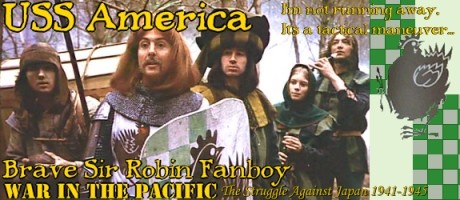Jorge_Stanbury
Posts: 4320
Joined: 2/29/2012
From: Toronto and Lima
Status: offline

|
your first link is an article from Jan 2013
And it is being at least a few decades in which speed has not being the main predictor of success in an aircraft design, I believe the F-16 is slower than most Migs, but they have had a better battle record than anything fielded by the Russians; and those super maneuverable Sukhois are great for airshows, but that is it, the Pugachev's cobra is useless in combat
check this:
https://www.airspacemag.com/military-aviation/f-35-faces-most-critical-test-180971734/
"Fighter aircraft all have to have a level of performance and maneuverability: speed, Gs, turn rate, turn radius, acceleration, climb—all of those things. In the F-35, there’s not a massive change in those performance metrics. The F-35 is better [than legacy aircraft], but not a lot better. But those ways to measure an airplane are not nearly as relevant now as they used to be. They’re not irrelevant, but they are not as important as all the other qualities that you should be measuring an airplane by.
If you were to write down all the ways in which you could measure an airplane—payload, fuel, ordnance, handling—and ask 100 pilots to rank which is the most important, I guarantee you that 100 out of 100 pilots would say “situational awareness.” By far. Not a single pilot in the world would say “turn radius.” Not one. Because the more you know, the more accurately you know it, the better able you are to make a decision.
In situational awareness, the F-35 is superior to all platforms, including the Raptor. I’d never been in an airplane that so effectively and seamlessly integrates information to tell me what’s going on around me—and not just from the radio frequency spectrum, but laser, infrared, electro-optical. That’s usually the first thing people notice when they get in the airplane. They know so much more than they ever knew before.
After situational awareness, you want to be able to dictate access regardless of the capability of the threat. A highly robust air-defense network can deny access. The biggest problem that legacy aircraft have right now is that the threat gets to dictate when and where we fly.
Air-defense networks can also be limiting for stealth aircraft. The first thing you have to think about in the F-35 is managing your signature. In an F-18, you don’t even think about it because everybody sees you the minute you take off, so you don’t spend a lot of time trying to hide. Managing all the components of low observability is very challenging, and pilots have to think about it all the time. And they don’t do it well the first time. We all struggle with that initially. But you de-brief and analyze and start to build a database of the methods being used to detect you. You start to build a strategy that will keep others from finding you. Where do you want to put other people in the formation so you can maximize information sharing and sensor coverage and sensor footprints? It’s really no different, from a philosophical viewpoint, from what we’ve always done. We spend a lot of time trying to figure out what our weaknesses are: What do I need to fix as a pilot?
< Message edited by Jorge_Stanbury -- 6/23/2020 5:28:38 PM >
_____________________________
|
 Printable Version
Printable Version



























 New Messages
New Messages No New Messages
No New Messages Hot Topic w/ New Messages
Hot Topic w/ New Messages Hot Topic w/o New Messages
Hot Topic w/o New Messages Locked w/ New Messages
Locked w/ New Messages Locked w/o New Messages
Locked w/o New Messages Post New Thread
Post New Thread